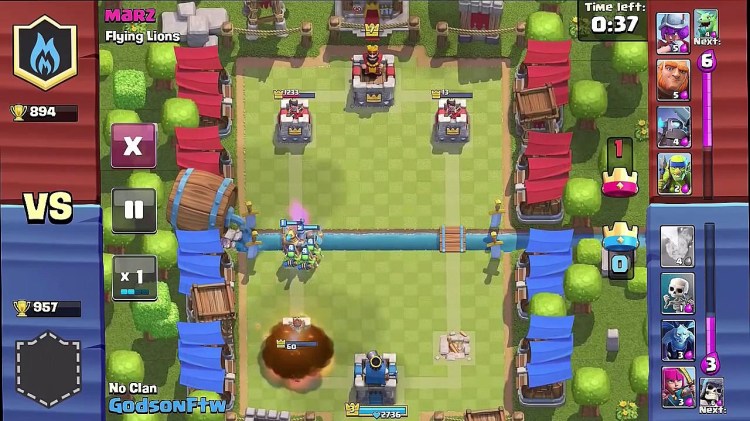SINGAPORE — It’s easier than ever to make a mobile game. Unfortunately, it’s also easier than ever for a mobile game to fail. But developers and publishers can maximize their chances by following a handful of important rules.
More than 1.8 billion people are playing mobile games around the world, but that doesn’t mean any game you put out will find an audience, gaming consultant Teut Weidemann explained in a presentation at the Casual Connect conference in Singapore. That’s because nearly a billion of those people are learning to play video games for the very first time, and that means they are easily turned off by certain looks, mechanics, and control schemes. Mobile gaming is a $36.9 billion industry, but it’s easy to miss out on that money as a developer if you make a few simple mistakes.
“If these [1 billion people] are new to games, they don’t know how the game speaks to them,” said Weidemann. “The game has to teach them. If you’re using advanced game mechanics, these players don’t know how to use them. They get frustrated, and they don’t play them.”
This is why King has had so much success, he said. They make “stupid simple” games. At the same time, Weidemann doesn’t think ambitious developers should necessarily chase King into that space. Instead, one of his first rules is that people should aim for gaps in the mobile market.
“Don’t be a sheep,” said Weidemann. “Don’t follow the Clash Royale crowd. If everyone is going that way, you should go the other way.”
This led Weidemann to talk about some of his other rules. These include analyzing data with care. He wants studios to dive beyond looking at averages and to never trust public data from companies. Instead, look deeper into the information and speak with professional firms to get a better understanding of what is happening.
Other rules include making unique experiences and avoiding dark games.
“On PC and console, we like dark games,” he said. “They’re scary. But you can’t do this on mobile because most people don’t know what they’re looking at. If you put a game with dark images up on the App Store, most people will think the game is broken.”
The consultant went so far as to say that avoiding dark games is the easiest advice he can give. They universally fail — at least for now. This is why you see so many studios embracing bright, colorful, and cute visuals.
“Cute characters are so easy to sell to a wide audience,” he said. “It’s Disney. It’s popular in Asia because of manga and anime.”
Now, cute doesn’t work as well in Europe. That audience thinks cute and colorful is for children, but developers are finding that it’s worth it to educate those gamers that cute games can have rewarding gameplay for adults.
“We have 1.8 billion potential customers, but they are living all over the world,” said Weidemann. “You have to find a graphics style that is compatible with all of them. Let’s face it, Asians are educated with a different visual style than Europerans than Americans.”
He said that makes for a complex market, and one where developers shouldn’t shoot from the hip.
“If your graphics director isn’t testing their style across the major regions of the world, then they aren’t doing their job,” he said.
And that testing should include something as fundamental as the game’s icon. Typically, in the past, a lot of publishers and studios have hired external firms to design a game icon. Those artists might come up with something like 10 ideas and then ask the client to pick one. Instead, Weidemann thinks developers should have their internal artists design three to nine icons and then run an identical Facebook ad campaign for each. Whichever one gets the highest clickthrough rate is probably the best icon.
Finally, the consultant explained that the biggest rule is that developers should aim for profitability and not to get into the top 20 highest-grossing games on the App Store.
“The goal to be in the top 20 is bullshit,” he said. “Your business goal should be to be profitable. You should make more money per month than the burn rate of your title.”
The top 20 games on mobile today is almost exactly the same as the top 20 from two or three years ago. The developers in those spots spent those years building up a massive audience, and no new game is going to launch and then immediately jump into that space.
Developers can kill themselves with massive user-acquisition spending, but Weidemann thinks that’s a terrible idea.
“We cause the problem of user acquisition ourselves. The problem is that the top companies are overspending,” he said.
A publisher like King spends three times the lifetime value of a user to acquire them because they are bringing three people — friends and family members — with them. That means they are driving up the cost for everyone.
The alternative to competing in the insane player-acquisition market is to turn to something like word-of-mouth. He suggested working with YouTube or social media influencers. The costs for that are going up, but it’s not as prohibitively expensive and it’s even occasionally possible to get YouTubers to promote a game without paying them at all.
Casual Connect arranged for my travel to its event. Our coverage remains fair.
VentureBeat's mission is to be a digital town square for technical decision-makers to gain knowledge about transformative enterprise technology and transact. Learn More

